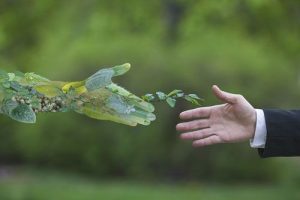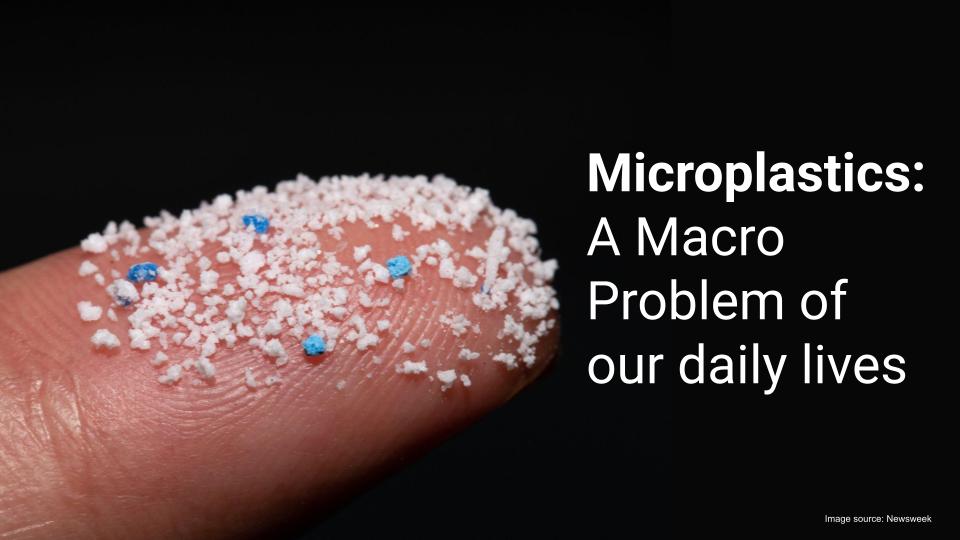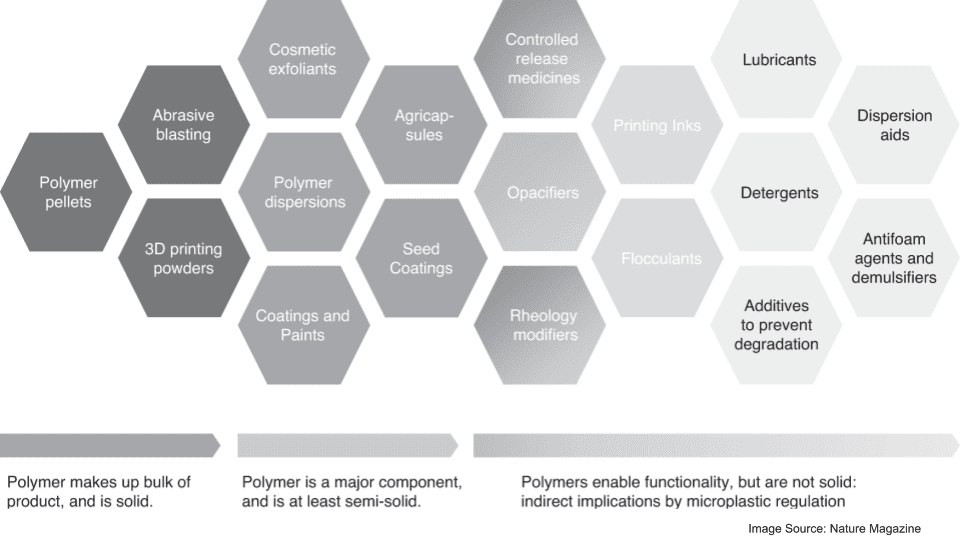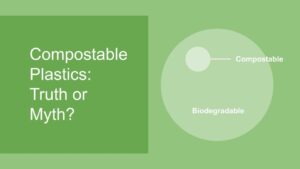
- All articles
Microplastics: A Macro Problem of our daily lives
By Ketul
Updated 18 Sep, 2024
5 min read

Contents
“Plastic will be the main ingredient of all our grandchildren's recipes.”
Anthony T. Hincks, author Tweet
This quote by Mr. Hincks, author of the book ‘An author of life’, got me really intrigued. When I researched more about this, I was appalled with what I found out!
Just to let you visualize what I got through my research, every liter of what that we drink, irrespective of the brand or the purifier we have at home, has around 325 microplastics in it.
Microplastics. We are eating it, drinking it, inhaling it, and utilizing it in every aspect of our lives. Microplastics are referred to as plastic particles that are less than 5 mm in length. They originate from a variety of sources. Primary microplastics are those that are directly released into nature as small particles e.g., microbeads in facial scrubs.
Some particles, on the other hand, are the result of the breakdown of larger plastic items. These are called secondary microplastics. The breakdown is caused by exposure to various environmental factors, especially the sun’s radiation. Remember seeing the warning sign on packaged water bottles that we don’t pay heed to? The one that advises us to keep the bottle away from sunlight? Microplastics are the reason.
“A bottle on the bank of the river, when exposed to the sun’s radiation degrades slowly and the plastic is broken into extremely small pieces. These pieces then enter the water body thus polluting our water sources”
IUCN report on microplastics Tweet
From the depth of the oceans to inside our bodies, these extremely minute shards have managed to secure their territories in every small crevice they find.
Don’t believe it? I’ll walk you through how we interact with them daily.
The first thing that we do when we wake up brushes our teeth with toothbrushes made from plastic, we change into clothes bought from fast fashion companies that use polyester or rayon (when washed, leaves behind enumerable microplastics), we head into the office, and heat our lunch in takeaway containers that shed huge numbers of microplastics into our food. If this wasn’t enough, we drink water that contains hundreds of these tiny particles every day!
Where do microplastics come from?
To understand how microplastics have infiltrated our systems we need to go back to the 20th century. The early years of plastic innovation induced every manufacturer to substitute every possible material for cheap plastic. This not only made their products more durable but also made them more affordable for the consumers and more profitable for the producers. According to Jennifer Lavers, a research scientist at the University of Tasmania, the use of plastics has soared since the 1990s. The single-use cheap plastic products have replaced most of the things in our life making them indispensable.

The well-known problem here is “Plastic is not bio-degradable” i.e., they cannot be decomposed. The plastic items just break down into smaller pieces. Therefore, almost every single plastic item we’ve ever used is still out there somewhere. The only difference is that they are now tiny particles floating in our water bodies or getting cooked with our food. Can we remove them? No! No matter how many times we wash our fruits or purify our water, the particles are so small that they cannot be extracted.
How does microplastics affect us?
Out of the 260 million tons of plastic that we throw every year, only 12% is recycled, as stated in a report by consultants McKinsey & Company, while the rest of the majority is burnt, tossed into landfills, or it ends up in the most improbable places on the planet such as our oceans and water-bodies. This has eventually corrupted our food and water sources. According to a new study published in the journal Environmental Science and Technology, humans may consume anywhere from 39,000 to 52,000 microplastic particles per year. When we add the estimates of how much microplastic is inhaled, the total number exceeds 74,000.
“On an average, we eat one Lego brick worth of plastic every week!”
Dalberg and the University of Newcastle in Australia Tweet
Oceanographers reported in 2015 that there was 15 trillion to 51 trillion microplastic debris floating in rivers and streams throughout the globe. That is 500 times more than the stars in our galaxy!
Annually, around eight million metric tons of plastics enter the oceans. Thus, microplastics have become omnipresent in our water bodies that are then ingested by all marine animals i.e., the organisms swallow plastic particles that have no nutritional value at all. The problem? More than one million animals die every year due to mistaking plastic for food.
These plastics remain suspended inside us and accumulate, raising the chances of inflammation of tissues or even cancer. Although, scientists are still trying to find out the exact details of how these plastics harm us.
What can we do to avoid microplastics in our daily lives?
The burning question remains ‘What can we do to reduce our exposure to them?’. Every change starts with us. Below is a small list of things that you can do to limit the spread of microplastics and save yourself-
1. Stop using plastic water bottles
Recent studies show that bottled water contains an excessive amount of microplastics. Switching to glass bottles or stainless-steel bottles would not only reduce your plastic intake but also minimize the waste generated due to single-use plastics
2. Using plastic-free or micro-bead free beauty products
Most of the cosmetics in the market contain enumerable primary microplastics. Primary microplastics are those that are directly released into nature as small particles e.g., microbeads in facial scrubs. Find sustainable cosmetics brands to switch to plastic-free products.
3. Avoid using single-use plastics
When our food is heated in a plastic container, the container sheds countless microplastics in our food. Always transfer the food to a ceramic or a glass bowl before heating.
4. Don't heat your meals in plastic containers
When our food is heated in a plastic container, the container sheds countless microplastics in our food. Always transfer the food to a ceramic or a glass bowl before heating.
5. Minimize your overall use use of plastics by switching to sustainable products
Menial steps of changing to a wooden pen-stand, or to a bamboo toothbrush and using a cloth bag can make a world of a difference.
6. Be a part of the slow fashion movement
Fast fashion companies use materials like polyester and rayon in order to make the clothes cheaper. These clothes when washed, release a ton of microplastics in the water. Find sustainable brands that are conscious of the environment and invest in clothes made of silk or wool etc.
7. Upcycling
There are a ton of YouTube videos that show you how you can use the different plastic items in your homes and creatively reuse them. This can be a very fun way to reduce the plastic waste that you create.
8. Get it to a recycler!
We cannot entirely eliminate plastics from our lives. But what we can do is recycle. Once a month, gather the plastic at your home and find a local recycler in your city.
These small measures are what will allow us to hope for a better and plastic-free tomorrow.
This blog is originally written by Ishita Paul. She is a Economics students from IPCW, University of Delhi. and a long time contributor to the Mission Sustainability.
Related articles


Bharat Sisodia and his inspiring work with Miyawaki ‘plantanence’ at the CATCH Foundation!
